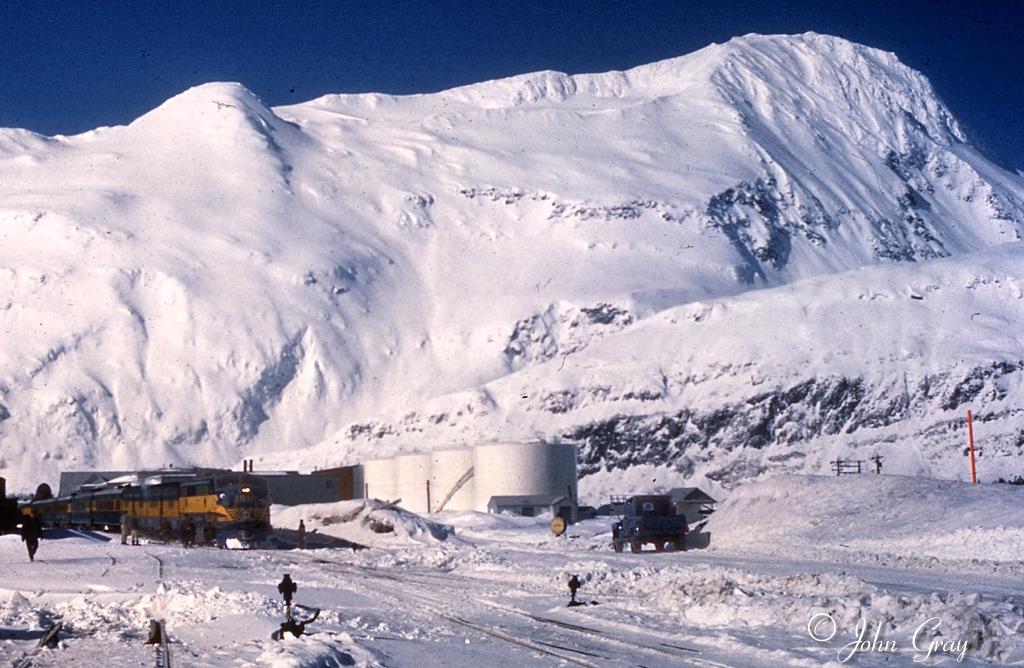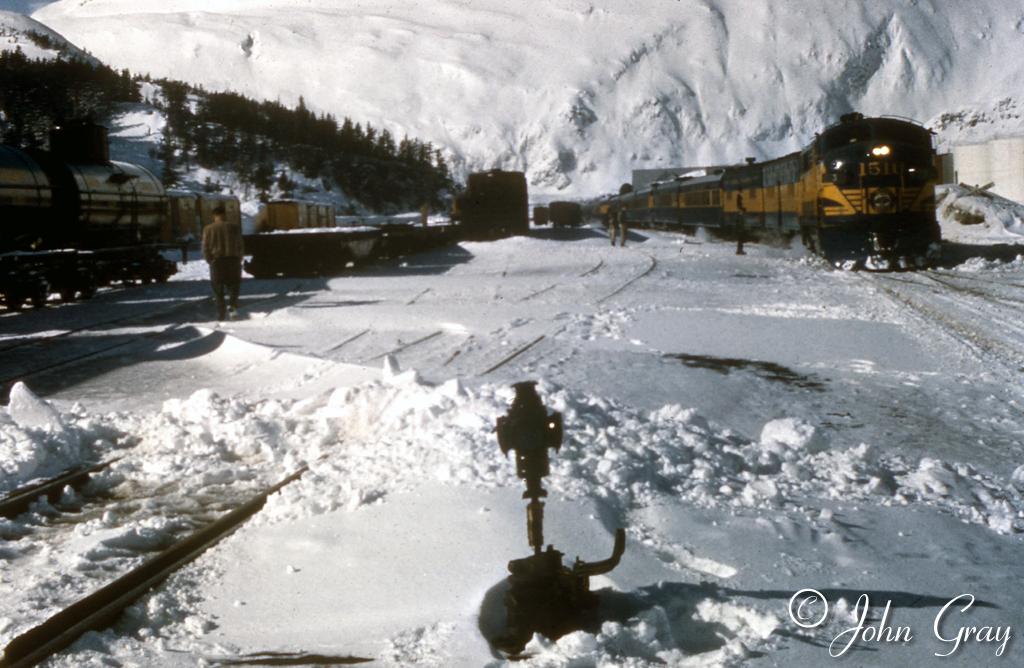

Whittier Troop Train - Taken March 1960. At the time the military
was still bringing most of their people into the state (but only a state for
a year!!) by ship through Whittier (usually) and sometimes Seward (my wife
first arrived in Alaska on a troop ship through Seward). When the ships arrived,
the railroad would run troop trains into Whittier to move the troops and their
personal baggage and equipment to either Anchorage or Fairbanks. Sometimes
these trains would run as Passenger extras, at other times the would move
as advance or second sections of scheduled trains. The latter is the case
in this instance where the train is running southbound as a second three (notice
that there are no green indicator lights displayed which would indicate a
first section), the regular southbound Anchorage-Whittier passenger train.
Note that this train is on track five in the yard (the dock lead) rather than
running down the main line
into the station at the south end of the yard. Notice also that this train
is running with troop kitchen cars for food service as well as regular 30
and 40 series coaches along with some 20 series cars on the rear. This happened
more frequently during the winter when the 30 and 40 series cars were not
needed for the Fairbanks trains. During the summer these trains would
sometimes show up with nothing but 20 series cars and troop sleepers. I also
have a photo of the Navy troop ship, at the Whittier dock, that was associated
with this rail move.
These trains almost always ran with a single FP-7, the only time that a 1500 usually got into Whittier at the time. This was one of the reasons that the railroad had 3 FP-7's. During the summer two were used on trains 5 and 6, the Fairbanks passenger trains, while one was available either for backup or, more usually, for the Whittier troop trains. In the winter it was the same situation with two FP-7's needed for trains 7 and 8, the tri-weekly overnight trains, and one used for the Whittier troop trains. Anytime that you see a photo of a passenger train south of Anchorage between 1953 and 1962 with only one FP-7 you can be almost certain it was a Whittier troop train. Special trains running to Seward (there were no regular Seward passenger trains after 1955), unless only one or two cars, always required more that one unit while the regular Whittier passenger trains usually ran with 1000 or 1001 as power until the arrival of the 1800's and conversion of the Whittier passenger train into a mixed (#23 and 24).
Finally, as you know, this day represents a particularly spectacular winter day for Whittier